The Blue Rider returns
–

"The whole body of work we call art knows neither borders nor nations but only humanity."
In recent years, large selections of works by the artists of the "Blue Rider" have left the Lenbachhaus for two exhibitions — "August Macke and Franz Marc" in 2015 and "Klee & Kandinsky" in 2015/16 — produced in collaboration with other museums, as well as shows at the Museo Thyssen-Bornemisza, Madrid, the MoMA, New York, the Städel, Frankfurt, the Alte Nationalgalerie, Berlin, the Palazzo Ducale, Venice, and elsewhere. The new installation of the Blue Rider department in the Lenbachhaus’s galleries brings a fresh perspective on beloved highlights of the museum’s collection.
Visitors can look forward to familiar treasures from the world’s largest ensemble of paintings by the members of the "Blue Rider" circle. The new hanging emphasizes the "aura" of some of these masterworks, affording them the space they need to shine—true to Kandinsky’s dictum that the focus of any contemplation of the work of art must be on its "essentially artistic" qualities. At the same time, the preference for the "essence of art" over its historically contingent features sustains a liberal and openminded approach to the stunning diversity of human creativity. This idea guided Kandinsky and Marc when they compiled the almanac "Der Blaue Reiter" in 1912: folk art, art by children, Egyptian silhouettes, African carved sculptures, and Bavarian reverse glass paintings appear side by side with the works of Europe’s Old Masters and the contemporary avantgarde. This impartial appreciation of the plurality of artistic articulation was a unique characteristic of the "Blue Rider" movement.
The new installation accordingly dedicates one room to the almanac and the works of art included in it; visitors can peruse the famous book’s pages on a touchscreen monitor. The gallery devoted to the paintings of Gabriele Münter presents her still lifes and figured interiors together with objects from the collection of folk and children’s art she and Kandinsky assembled. Historic films — examples of what Münter called, a little dismissively, "Kintopp" — are screened in a documentary division, and listening stations let visitors explore the relationship between the art of the Blue Rider, especially Kandinsky, and the music of contemporary avantgarde composers including Arnold Schoenberg, Anton von Webern, Alban Berg, and Alexander Nikolaevitch Scriabin.
Curated by Annegret Hoberg
Works
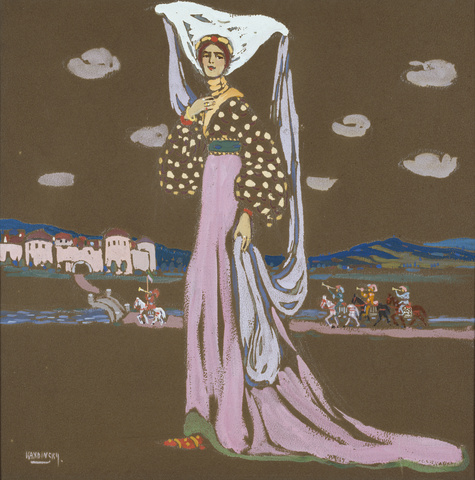
Wassily Kandinsky
Die Nacht (Spazierende Dame), 1903
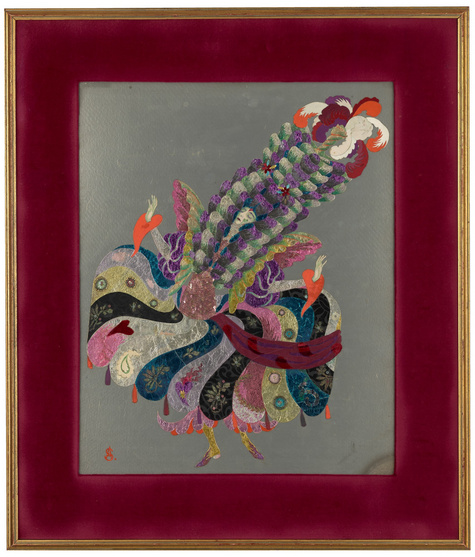
Alexander Sacharoff
Pavane Fantastique, um 1916/17
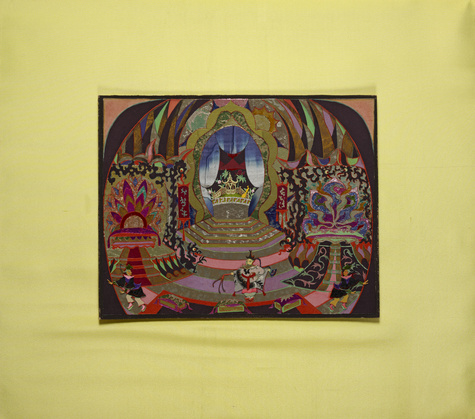
Alexander Sacharoff
Bühnenbild für die Oper 'Turandot' von Busoni (3. Akt: Der Thronsaal), um 1917
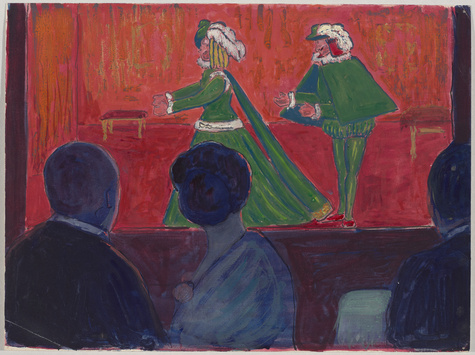
Marianne von Werefkin
Marionettentheater – im Vordergrund Jawlensky und Marianne von Werefkin, 1917/18
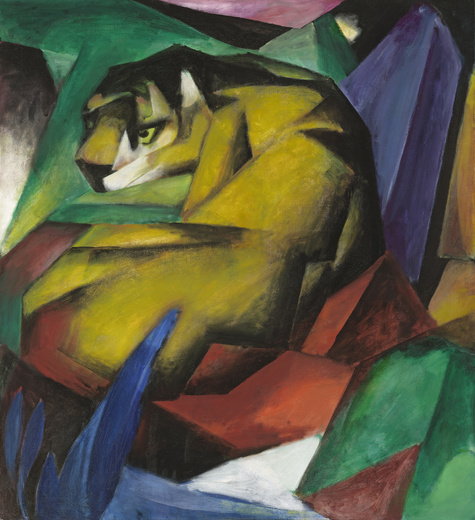
Franz Marc
Tiger, 1912


